Wendy Doniger is once again back in news, as always, for the wrong reasons. This time the Penguin decided to withdraw her book rather than face the criminal charges in the court of law. For those who may not be fully aware of the facts of the matter, briefly the story is as follows. Wendy Doniger published her book entitled ‘The Hindus: An Alternative History’ in 2009. She holds high sounding Mircea Eliade Distinguished Service Professor Chair in History of Religions at the University of Chicago. Even before the publication of this book, she and her students have published many books denigrating Hinduism. Most of her own and her students’ dissertations/books on Hinduism have often been described as pure pornography by even the most serious academic journals.
Doniger and her students work around a central theme called “Psychoanalysis of the Hindu Religion”. Their approaches show serious problems with the training, competence and the mindset of academic scholars of Hinduism and raise questions about their parochial approaches and methodologies and at the same time the peer reviews. The image of India and Hinduism are distorted by these scholars.
Imagine the psychological damage wrought on an Indian who is made to read a text that says that ‘Ganesa’s trunk symbolises a limp phallus; Ganesa’s broken tusk is a symbol of castration complex of Indian men; his large belly and love for sweets are proof of Hindu male’s enormous appetite for oral sex; Lord Siva is interpreted as a womaniser whose temples encourage ritual rape, prostitution and murder; Ramakrishna Paramhamsa was a conflicted homosexual and a paedophile who sexually abused Swami Vivekananda; Lord Rama caused oppression of Indian minorities and women; Laxman had illicit relationship with Sita, Goddess Kali is the mother with penis; tantra temples are centers of rape and murder rituals, and so on. This section also gives examples as to how American scholars not only try to justify such outrageous writings but also how various foundations and organisations go to the extent of praising and awarding such works and giving prestigious appointments.
Such things have been going on for almost 40 years. But after the publication of her ‘The Hindus: An Alternative History’ concerned citizens took note of what she and her group have been writing. Dina Nath Batra, a practicing Hindu, filed an FIR with the police and initiated a criminal proceeding against Wendy Doniger and the Publishers – Viking and Penguin. Once the publishers saw no escape from punishment including a jail sentence, they opted for an out of the court settlement and decided to withdraw the book from published list and circulation. This out of court settlement between Penguin, a giant in the publishing industry, and Dina Nath Batra, a practicing Hindu, has prompted the pseudo-secularist and anti-Hindu activists to indulge in their old game: Hindu bashing in the name of freedom of expression and artistic creativity.
It is pertinent to note here that never in the intellectual world, any other religion – be it Islam, Christianity, Judaism, or even the smaller sects – are ever denigrated and ridiculed in the manner Hinduism is treated under the garb of intellectual freedom and freedom of expression and creativity.
Therefore, a far deeper question needs to be addressed here. Are scholars like Wendy Doniger frustrated individuals who are staying away from the well defined path of intellectual discourse or is there a greater design to what they are doing?
Who Controls and Promotes Such Studies?
As with any large academic field, Religious Studies in the US is highly organised and features prestigious journals, academic chairs, and planned and extensive programmes of study. The American Academy of Religion (AAR) is a primary organisation for academic scholars of Religious Studies in the United States. Religion in South Asia (RISA) is a unit within the AAR for scholars who study and teach about religions of the Indian subcontinent.
The AAR traces its origin back to 1909 when an organisation was formed for Professors and scholars of Biblican Studies whose purpose was “to stimulate scholarship and teaching in [Christian] religion”. In 1922, the name was changed to National Association of Biblican Institutions (NABI). Thus, its early history was clearly Bible-centric. In 1963, stimulated by the ‘change in the study of religion’, NABI became the American Academy of Religion (AAR). The AAR has over 8,000 members who teach in some 1,500 colleges, universities, seminaries and schools in North America and abroad. Since its inception, the religious studies organisations that evolved into AAR have maintained close relations with the Society of Biblical Literature (SBL), founded in 1880. For many decades, the two have held their conferences jointly. While SBL members primarily study and promote insiders’ views of Judeo-Christianity, the AAR members are not supposed to promote any particular viewpoint, and are required instead to pursue study of religions through a neutral lens. The stated mission of AAR is to promote objectivity from within, or outside of, any particular religious tradition. With a growing membership, the AAR has developed an enormous clout over the direction of Religious Studies in particular and the humanities at large.
The Impact of AAR Activities
Americans in general are deeply religious people who see the world through the lenses of religion, particularly some variants of Judeo-Christianity. Western representation of India is inseparable from the depiction of India’s religions, particularly Hinduism. Many post-colonial scholars of Indian origin have tried unsuccessfully to wish this link away. The problems of India are seen by the Americans as inseparable from the problems of Hinduism. Attempts by ‘secular’ Indians to distance themselves from Hinduism have led to an academic vacuum about Indian traditions, which has been filled by Western and American scholars who often have their own agendas to serve.
The researches and writings of religious scholars associated with AAR and RISA go beyond the discipline’s boundaries, penetrating the mainstream media, and directly impacting the American public perception of India via museum displays, films and textbooks. The study of religion informs a variety of disciplines, including Asian Studies, International Studies, Women’s Studies, Sociology, Anthropology, History, Literature, Journalism, Education and Politics. Western theories of Hinduism have produced fantastic caricature of Hindus that could be dramatised by Hollywood movies, satirical TV sit-coms, or animated sci-fi cartoons. In all this, AAR’s Religion in South Asia (RISA) group can be identified as a key source of Western academic influence over India-related studies.
Inputs from these scholars decidedly have an impact on US foreign policy. For instance, a conference at the University of Chicago featured Wendy Doniger, Martha Nussbaum, Amartya Sen, among others; who discussed about the generic ‘Hindu groups’ as the most serious threat to India’s democracy. Indeed, in the conference announcement, Nussbaum claimed that ‘Americans are wrong to be focusing on Islamic fundamentalism as a threat to democracy’. She alleged that thinking about India is instructive to Americans, who in the age of terrorism can easily over-simplify pictures of the forces that threaten democracy… In India, the threat to democratic ideals comes not from a Muslim threat, but from Hindu groups.
Unlike in India, the academic study of religions in the US is a major discipline involving over 8,000 university professors, most of whom are members of AAR. Within this organised hierarchy, the study of Hinduism is an important and influential discipline. The book highlights the fact that the discipline has been shaped by the use of Euro-centric categories that are assumed to be universal by Western syndicated research. The producers and distributors of this specialised research/knowledge comprise a sort of closed, culturally insular cartel, which has disastrous consequence for original thinking about India and Hinduism.
The selective and questionable ‘academic research’ and its consequences filter into American classrooms, textbooks and media. Thus, the average American learns much about India from the received wisdom of the Academy.
Who is to be Blamed?
Let us be honest and do some soul searching to understand who is responsible for such a sorry state of affairs regarding Hinduism studies. It must be clear that the entire blame for biases and selective portrayals of Hinduism and Indian culture can not be laid at the doorsteps of the AAR, RISA or even the biased scholars within it. Indians themselves have contributed to the problem in significant ways. While American universities have major programmes for studying world religions and cultures, Indian universities do not offer similar programmes and provide the intellectual inputs to the world. Indeed, the discipline of Religious Studies does not even exist in most universities in India due to the particular myth that positive knowledge about, and intellectual involvement with, religion breeds communalism. Many Americans are shocked to learn that there is a deep prejudice among India’s intellectually colonised intelligentsia, according to which secularism implies the exclusion from, or even condemnation of Indic religions in, civic society – which is exact opposite of the respectful place given by American secular civic society to its majority Judeo-Christian traditions.
Unlike all other major world religions, Hinduism does not have its own home team, by which we mean a combined group of academic scholars who are both practitioners of the faith and well-respected in the academia at the
highest levels. Judaism, Christianity, Islam, Buddhism and Sikhism each have their respective home teams in the academics – in fact, multiple homes representing different denominations of these religions. Even China has recently established numerous well-funded Confucius institutes around the world that teach Chinese civilisational approaches to human issues on par with the western models.
However, India’s case and responsibility of Indian academia and universities do not end here. Even the departments (like Sanskrit, Archaeology, History, Culture, Philosophy etc.) where religious studies could be undertaken have not fulfilled their obligations to the nation and its people. The reason for this apathy/failure/willful negligence is best illustrated by Dilip Chakrabarti, who observes how the West has bred and bought off a whole generation of elitist Indians, and how this axis operates:
“After Independence ... [Indians] – especially those from the ‘established’ families – were no longer apprehensive of choosing History as an academic career... To join the mainstream, the historians could do a number of things: expound the ruling political philosophy of the day, develop the art of sycophancy to near-perfection or develop contacts with the elite in bureaucracy, army, politics and business. If one had already belonged to this elite by virtue of birth, so much the better. For the truly successful in this endeavour, the rewards were many, one of them being the easy availability of ‘foreign’ scholarships/fellowships, grants, etc. not merely for themselves but also for their protégés and the progeny. On the other hand, with the emergence of some specialist centers in the field of South Asian social sciences in ‘foreign’ universities, there was no lack of people with different kinds of academic and not-so-academic interest in South Asian history in those places too. The more clever and successful of them soon developed a tacit patron-client relationship with their Indian counterparts, at least in the major Indian universities and other centers of learning. In some cases, ‘institutes’ or ‘cultural centers’ of foreign agencies were set up in Indian metropolises themselves, drawing a large crowd of Indians in search of short-term grants or fellowships, invitations to conferences or even plain free drinks.”
And finally, even the scholars, who have done substantial work that challenges the western scholars’ theses, are demonised, accused of communalism, Hindutva, etc. A number of historians and sociologists have pointed out that the control of others’ depiction by the White Americans has led to their ethnic cleansing, incarceration, enslavement, invasions and genocides. Native Americans, Blacks, Jews, Gypsies, Cubans, Mexicans, Chinese, Phillippinos, Japanese, Vietnamese and now Iraqis have suffered brutalities that were legitimised by their depictions as primitive, exotic, irrational, heathen, savage, dangerous and lacking in human values.
On a wider canvas, one may feel upbeat about India’s success from business and economic points of view which is exemplified by books like Gurucharan Das’ India Unbound or Thomas Friedman’s The World is Flat or even a large number of articles in business periodical like Forbes, Fortune and Business Week. But the fact remains that perceptions change with much efforts. Diplomat and intellectual Simon Anholt observes that while India is shining in business, especially IT, there are many other factors determining its image and credibility. This image, in turn, will either facilitate or hamper India’s quest for economic growth in a globally competitive world. He writes:
“A country is like a brand because it has a reputation, and because that reputation partly determines its success in the international domain. The ability of each country to complete against others for tourists, for investments, for consumers, for the attention and respect of the media and other countries is significantly determined by power and quality of its range… What seems certain is that India’s brand new image is a fragile one, based on a couple of prominent sectors and a handful of globally successful entrepreneurs… but it isn’t yet clear how ‘Capitalist India’ fits together in the public imagination with the Indo-Chic of music, fashion and movies and with the ‘Traditional India’ image of vast, mysterious, culturally rich but chaotic and even desperate country. A clear, single, visionary national strategy is badly needed – but one that is, of course, rooted in truth and not in wishful thinking.
Anholt’s point is that unless Indians take charge of engagement with the world vis-à-vis their country and its culture is portrayed properly, the economic future of all Indians may be at stake.
Published Date: 12th March 2014, Image source: http://4.bp.blogspot.com

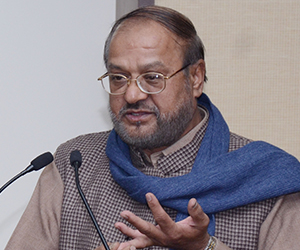

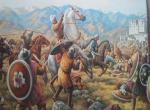
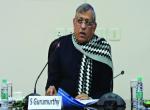
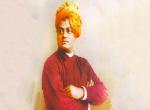
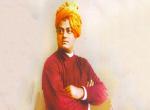

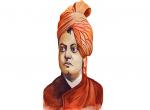
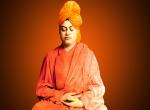
Post new comment